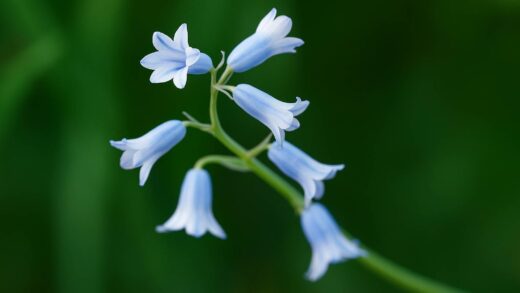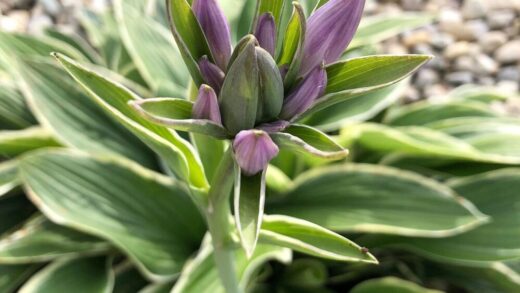Caring for the Atlas cedar, a majestic coniferous evergreen, is a long-term commitment that rewards the dedicated gardener with a truly spectacular specimen in the landscape. Understanding its fundamental needs from the outset is crucial for establishing a healthy, vigorous tree that will thrive for decades, if not centuries. This involves a holistic approach, considering everything from its initial placement to ongoing maintenance practices throughout the seasons. A well-cared-for Atlas cedar is not merely a plant; it becomes a living sculpture, a focal point that defines the character of a garden and provides year-round interest with its stunning foliage and architectural form.
The journey to a magnificent Atlas cedar begins with thoughtful site selection, a decision that will influence the tree’s health for its entire life. These trees demand ample space to reach their full potential, both vertically and horizontally, so consider their mature size at the time of planting to avoid future conflicts with buildings, power lines, or other trees. Proper spacing ensures adequate air circulation, which is vital for preventing the development of fungal diseases. Furthermore, the chosen location must be shielded from harsh, sweeping winds, which can cause needle desiccation and damage to the branches, particularly in younger, more vulnerable specimens.
Soil quality is another cornerstone of successful Atlas cedar cultivation, as these trees have specific preferences that must be met. They perform best in well-drained, slightly acidic to neutral soil, as heavy clay or waterlogged conditions can quickly lead to root rot, a fatal issue for cedars. Before planting, it is highly advisable to amend the soil with organic matter such as compost or well-rotted manure to improve its structure and fertility. This preparation creates a friable, nutrient-rich environment that encourages a strong and expansive root system, which is the foundation of a healthy tree.
Once established, the Atlas cedar is remarkably drought-tolerant, but it requires consistent moisture during its formative years to develop this resilience. The first few seasons after planting are critical, and you must ensure the root ball does not dry out completely. A deep watering schedule is more effective than frequent, shallow applications, as it encourages roots to grow deeper into the soil profile where they can access more stable moisture reserves. This careful attention to watering during the establishment phase pays significant dividends in the tree’s long-term health and ability to withstand periods of dry weather later in its life.
Understanding the tree’s foundational needs
The fundamental requirements of the Atlas cedar are rooted in its native habitat in the Atlas Mountains of North Africa. Replicating these conditions as closely as possible is the key to ensuring the tree flourishes in your garden environment. This means providing full sun exposure, as the tree requires at least six to eight hours of direct sunlight daily to maintain its dense foliage and vibrant needle color. Insufficient light will result in sparse growth, elongated branches, and a generally weakened constitution, making the tree more susceptible to pests and diseases.
More articles on this topic
Beyond sunlight, air circulation is a critically important yet often overlooked aspect of care. Good airflow around the tree helps to keep the foliage dry, significantly reducing the risk of fungal pathogens taking hold. This is why proper spacing from other plants and structures is so essential. Crowded conditions create pockets of stagnant, humid air, which is the perfect breeding ground for diseases like tip blight. When planning your garden, visualize the tree at its mature size and ensure it will have the open space it needs to breathe.
The structural integrity of the Atlas cedar is also a key consideration, especially for varieties with weeping or unique growth habits. While these trees generally develop a strong central leader and well-spaced branches on their own, occasional corrective pruning may be necessary in their youth to encourage a sound structure. This might involve removing competing leaders or branches with weak, narrow crotches that could fail under the weight of snow or ice. Establishing a good framework early on prevents more significant structural problems as the tree matures.
Finally, a crucial foundational need is patience and a long-term perspective. The Atlas cedar is not a fast-growing tree, and its majestic character develops over many years. It is important to resist the temptation to over-fertilize or over-water in an attempt to speed up its growth, as this can do more harm than good. Providing the right conditions and allowing the tree to grow at its natural pace is the most effective strategy for cultivating a healthy, long-lived, and beautiful specimen that will be a legacy in your landscape.
Soil preparation and management
Proper soil preparation is a non-negotiable first step for ensuring the long-term vitality of an Atlas cedar. The ideal soil is a sandy loam that allows for excellent drainage, as the primary threat to this tree’s root system is excessive moisture. If your native soil is heavy clay, significant amendment is required to create a suitable growing environment. You can improve drainage and aeration by incorporating coarse sand, pine bark fines, and a generous amount of compost into a large planting area, not just the immediate planting hole, to encourage roots to spread outward.
More articles on this topic
Before planting, conducting a soil test is a wise investment of time and resources. This will provide valuable information about the soil’s pH and nutrient composition, allowing you to make precise adjustments. Atlas cedars prefer a pH range between 6.0 and 7.0, so if your soil is overly alkaline, you may need to add elemental sulfur to lower the pH gradually. Conversely, if the soil is excessively acidic, dolomitic lime can be used to raise the pH to a more appropriate level for nutrient uptake.
Once the tree is planted, ongoing soil management primarily revolves around maintaining its structure and fertility through mulching. Applying a two- to four-inch layer of organic mulch, such as shredded bark or wood chips, over the root zone is highly beneficial. This mulch helps to conserve soil moisture, suppress weed growth that competes for nutrients, and regulate soil temperature, protecting the roots from extreme heat in summer and cold in winter. As the organic mulch breaks down, it also slowly releases nutrients into the soil, contributing to the tree’s overall health.
It is critical to apply mulch correctly to avoid causing harm to the tree. The mulch should be spread evenly over the root zone, extending out to the drip line of the branches, but it must never be piled up against the trunk. This practice, often called “volcano mulching,” traps moisture against the bark, creating an ideal environment for fungal diseases and rot to develop, which can girdle and kill the tree. Always leave a few inches of space between the base of the trunk and the start of the mulch layer to ensure proper air circulation.
Seasonal care calendar
Spring is a season of awakening for the Atlas cedar, making it a critical time for inspection and foundational care. As the weather warms, carefully examine the tree for any damage that may have occurred over the winter, such as broken branches from snow or ice. This is also the ideal time to apply a slow-release, balanced fertilizer formulated for evergreen trees, giving it the necessary nutrients to support its new flush of growth. A fresh layer of mulch can also be applied to help retain spring moisture and suppress early weed growth.
Summer care for an established Atlas cedar is primarily focused on monitoring its water needs, especially during periods of high heat and drought. While mature trees are quite resilient, younger trees or those planted in sandy soils may require supplemental deep watering to prevent stress. Check the soil moisture a few inches below the surface; if it is dry to the touch, it is time to water thoroughly. Avoid frequent, light sprinklings, as this encourages a shallow root system that is more vulnerable to drought conditions.
Autumn is the time to prepare your Atlas cedar for the rigors of the coming winter. Ensure the tree is well-hydrated before the ground freezes, providing a final deep watering if rainfall has been scarce. This helps the tree avoid winter desiccation, a condition where the needles lose moisture to dry winter winds while the frozen ground prevents the roots from replenishing it. Raking up and removing any fallen debris from around the base of the tree can also help to reduce the overwintering sites for pests and fungal spores.
Winter care for the Atlas cedar is generally minimal in appropriate hardiness zones, as it is a resilient species. However, young or newly planted trees can benefit from some protection. Wrapping the trunk with a commercial tree guard can prevent sunscald and protect the bark from gnawing animals. In areas with heavy, wet snow, it may be necessary to gently brush snow off the branches to prevent them from bending or breaking under the weight. Avoid using salt-based de-icing products near the tree’s root zone, as this can be highly toxic to the plant.
Long-term health and monitoring
Ensuring the long-term health of your Atlas cedar involves developing a keen eye for observation and a proactive approach to its care. Regularly inspect the tree for any early signs of stress, disease, or pest infestation. Look for changes in needle color, such as yellowing or browning, which can indicate a range of issues from nutrient deficiencies to root problems. Also, check the branches and trunk for any unusual growths, cankers, or oozing sap, which could signal a more serious health concern that needs to be addressed promptly.
A key aspect of long-term monitoring is assessing the tree’s growth rate and overall vigor from year to year. A healthy Atlas cedar should produce a noticeable amount of new growth each spring, characterized by a soft, bright color at the tips of the branches. If you notice that growth has become stunted or the foliage appears thin and sparse, it is a clear indication that something in its environment is not optimal. This should prompt a careful review of its growing conditions, including soil health, water availability, and sun exposure.
As the tree matures, its relationship with the surrounding landscape will change, which requires ongoing management. Lower branches may eventually need to be removed to allow for clearance for mowing or pedestrian traffic. It is also important to monitor the growth of nearby plants to ensure the cedar continues to receive adequate sunlight and is not being crowded. Proactive pruning to maintain good air circulation through the canopy remains a vital practice for disease prevention throughout the tree’s life.
Ultimately, the goal of long-term monitoring is to foster a resilient tree that can largely care for itself. By addressing potential issues before they become significant problems and maintaining an optimal growing environment, you build the tree’s natural defenses. A healthy, well-sited Atlas cedar is far less likely to succumb to pests and diseases than a stressed one. This consistent, observant approach to care is the best way to guarantee your tree will grow into the majestic, awe-inspiring specimen it is meant to be.
Common mistakes to avoid
One of the most frequent and damaging mistakes in Atlas cedar care is improper planting depth. Planting the tree too deeply is a common error that can lead to a slow decline and eventual death. The point where the roots begin to spread from the trunk, known as the root flare, must be positioned at or slightly above the surrounding soil level. Burying the root flare restricts oxygen flow to the root system and can promote trunk rot, suffocating the tree over time and making it vulnerable to a host of secondary problems.
Another critical error to avoid is overwatering, which is often done with the best of intentions. While young trees need consistent moisture, the Atlas cedar is fundamentally a drought-tolerant species that detests “wet feet.” Constantly saturated soil deprives the roots of oxygen and creates the perfect conditions for fungal root rot pathogens to thrive. It is far better to water deeply and infrequently, allowing the top few inches of soil to dry out between waterings, than to provide a little water every day. This encourages a deep, resilient root system.
Improper pruning techniques can also cause significant harm to an Atlas cedar. A common mistake is making flush cuts right against the trunk when removing a branch. This removes the branch collar, a raised area of tissue at the base of the branch that contains specialized cells for wound healing. Removing this collar creates a larger wound that the tree cannot easily seal, leaving it open to decay and disease. Similarly, “topping” the tree by cutting off its main vertical leader is a destructive practice that ruins its natural form and creates a weak, unstable structure.
Finally, neglecting the soil and its surrounding environment is a mistake that can undermine the tree’s health over the long term. This includes failing to mulch, which exposes the soil to temperature extremes and moisture loss. It also involves the indiscriminate use of herbicides or “weed and feed” lawn products near the tree’s root zone, as the chemicals can be absorbed by the roots and cause significant damage. A healthy tree requires a healthy ecosystem, and protecting the soil beneath it is just as important as caring for the visible parts of the tree.


















